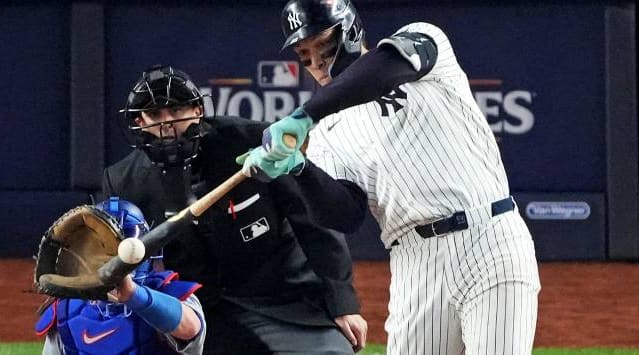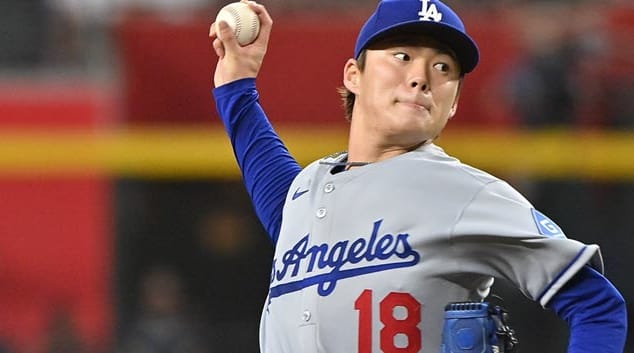It could be a power righty who adds a changeup so that right-handed batters have to think about that while lefties now must look for something fading away instead of all movement coming into them. It could be a lefty adding a cutter (see Matt Moore last year) so that he can come in on left-handed batters and get weaker contact or freeze them on the inner half. Sometimes it's a pitcher changing the shape of his breaking ball, or the grip on his changeup.
When looking at new pitches, the ones that intrigue me are the swing-and-miss pitches: the changeups, the breaking balls and the splitters. I am not so intrigued by cutters or changing to two-seamers because those are not pitches designed to limit the quality of contact rather than any contact. This entire project began with me looking for a hidden source of strikeouts for pitchers and, as secondary wish, some that might be on the verge of a breakout with the new approach to pitching.
Last year, we had a number of pitchers with new pitches. Let's look back and see how that group did last year compared to 2015. The biggest challenge of this particular project is pitchers will sometimes talk about the new pitch, use it in camp, and leave it in Florida or Arizona. Let's start by looking at the new pitch list from last year and who actually used it.
To qualify for the list, the pitcher has to have used the "new pitch" fewer than five percent of the time the previous season or have made a substantial change to the pitch with a grip (2 to a 4 seam, standard to a spike curve). The yes/no column below is using a five percent threshold using data from Fangraphs and showing pitchers who worked at least 40 innings in 2016. If the pitcher used the pitch less often in 2016 than in 2015, they earned a "No."
| PLAYER | NEW PITCH | USAGE? |
| Kyle Hendricks | Curveball | Yes |
| Kendall Graveman | Changeup | No |
| Noah Syndergaard | Cutter | No |
| Hector Santiago | Slider | No |
| Jimmy Nelson | Changeup | No |
| Drew Pomeranz | Cutter | Yes |
| Jon Gray | Curveball | Yes |
| Ivan Nova | Cutter | No |
| Michael Fulmer | Cutter | No |
| Matt Wisler | Changeup | No |
| Michael Wacha | Cutter | Yes |
| Taijuan Walker | 2-seam FB | No |
| Tyler Duffey | splitter | No |
| Andrew Cashner | Knuckle-Curve | Yes |
| James Paxton | Cutter | Yes |
| Sonny Gray | splitter | No |
| Aaron Nola | changeup | No |
| Joe Ross | splitter | No |
| Nate Karns | curveball | No |
| John Lamb | changeup | No |
| Brandon Maurer | losing curve | No |
| Blake Treinen | changeup | No |
| Kevin Siegrist | curveball | Yes |
| Justin Wilson | slider | No |
| Craig Kimbrel | splitter | No |
| Joe Smith | changeup | Yes |
| Koji Uehara | slutter | No |
| Jesse Hahn | changeup | No |
| Enrique Burgos | splitter | No |
| Cam Bedrosian | changeup | No |
| Sean Doolittle | split-change | No |
Let's look at those who did use the new pitch more often or used the re-tooled pitch more frequently than they had the previous year.
Kyle Hendricks was already throwing a curve, but he made some changes to it last year. He told Fangraphs' Eno Sarris in March that he was working on the curveball and wanted to steal strikes with it and get more groundballs with it. Heck, he even evolved the pitch during the season. He did not use it demonstrably more in 2016 than he did in 2015, but it was there and it did serve its purpose as he went on to finish third in the Cy Young vote:
| YEAR | PITCHES | SWING% | CONTACT% | STRIKE% | CALLED STRIKE% | SwSTR% |
| 2015 | 205 | 39 | 83 | 54 | 25 | 7 |
| 2016 | 226 | 25 | 84 | 57 | 43 | 4 |
Drew Pomeranz went to the San Diego front office with his desire to be a starting pitcher. He had been mostly a two-pitch guy, but added the cutter in the offseason to give him the necessary third pitch to be a starter. He was awesome for the Padres with the new pitch even though he worked through shoulder soreness that was eventually uncovered when he was dealt to Boston. After a rough start, Pomeranz continued his strikeout success in the American League, though he struggled to keep the ball in the yard.
All in all, the cutter was a big difference maker that allowed him to find success as a starting pitcher that he had not had. He saw a slight uptick in his swing-and-miss rate and actually improved his strikeout rate while transitioning from the bullpen to the rotation.
Jon Gray decided he wanted to defy the laws of physics and add a curveball to his fastball/slider/change mixture. By linear weights, Gray's curveball was an above-average pitch, and while his slider is still the better of his two breaking balls, being able to put four pitches in the minds of batters was a plus for Gray as he improved his strikeout rate from 22 to 26 percent and his swinging-strike rate from 10 to 12 percent.
| TYPE | PITCHES | SWING% | CONTACT% | STRIKE% | CALLED STRIKE% | SwSTR% |
| Curve | 307 | 32 | 68 | 56 | 36 | 10 |
| Slider | 752 | 58 | 57 | 69 | 27 | 25 |
Michael Wacha used his cutter more, but it was not an effective pitch for him because his fastball was not that good, either. Cutters work well when the fastball is in good shape, but when the heater suffers, the cutter loses some of its effectiveness, as well. The league hit .320 off his fastball, and it is tough for any pitcher to do well when the ol' numero uno is stinking up the joint.
Andrew Cashner has always thrown a curve, but he changed the grip on it to get more movement. The knuckle-curve is good for getting more depth on the pitch, but it is tougher to control and throw for strikes. He did not throw the pitch a ton, but he threw it enough to qualify for the list. Let's see how the pitch improved last year from 2014-2015:
| YEAR | PITCHES | SWING% | CONTACT% | STRIKE% | CALLED STRIKE% | SwSTR% |
| 2014-15 | 110 | 43 | 85 | 66 | 41 | 6 |
| 2016 | 136 | 35 | 77 | 58 | 35 | 8 |
He got the desired effect of the pitch with less contact, but his overall strikeout rate fell a bit last year while he struggled pitching for both San Diego and Texas.
James Paxton changed his repertoire and his arm slot, and I think the arm slot has more to do with his success last year than anything else because he could finally command his heater. However, we cannot completely slight the cutter because it was a very effective pitch for him:
| YEAR | PITCHES | SWING% | CONTACT% | STRIKE% | SwSTR% |
| 2015 | 29 | 41 | 67 | 52 | 14 |
| 2016 | 325 | 56 | 66 | 67 | 19 |
Paxton took that pitch and threw it for strikes and generated swings-and-misses on the pitch, which is very unusual for the cutter. In fact, Paxton had a higher swinging-strike rate with his cutter than any of his other pitches. Have I mentioned he is my bold prediction to finish in the top three for the AL Cy Young yet?
Kevin Siegrist was reshaping his curve last spring to get more spin and action to it. His strikeout rate declined last year, but it was not the fault of his curveball as he generated more than double the swings-and-misses with the pitch than he had the previous year:
| YEAR | PITCHES | SWING% | CONTACT% | STRIKE% | SwSTR% |
| 2015 | 85 | 35 | 73 | 45 | 9 |
| 2016 | 113 | 36 | 49 | 44 | 20 |
Lastly, Joe Smith wanted to add a changeup to help him against lefties. He said he had not thrown one since 2010, and the data agrees with him, but even then he only threw 10. Last year, Smith threw 30 changeups but was better against lefties as he held them to a .220 batting average coming off a season when they hit him at a .283 clip.
Pitchers are just like the rest of us in that they'll say they are going to do something, but they do not always follow through. Plenty came to camp with a new pitch, but only a handful used it during the season, and some found a lot of success with it. If you would like to see which pitchers might be doing that in this season, check out the 2017 New Pitch Tracker. An early trend to watch is the number of pitchers, particularly hard-throwing relievers, that are working on changeups. The thought of Andrew Miller and Edwin Diaz using changeups is practically unfair to batters.

























